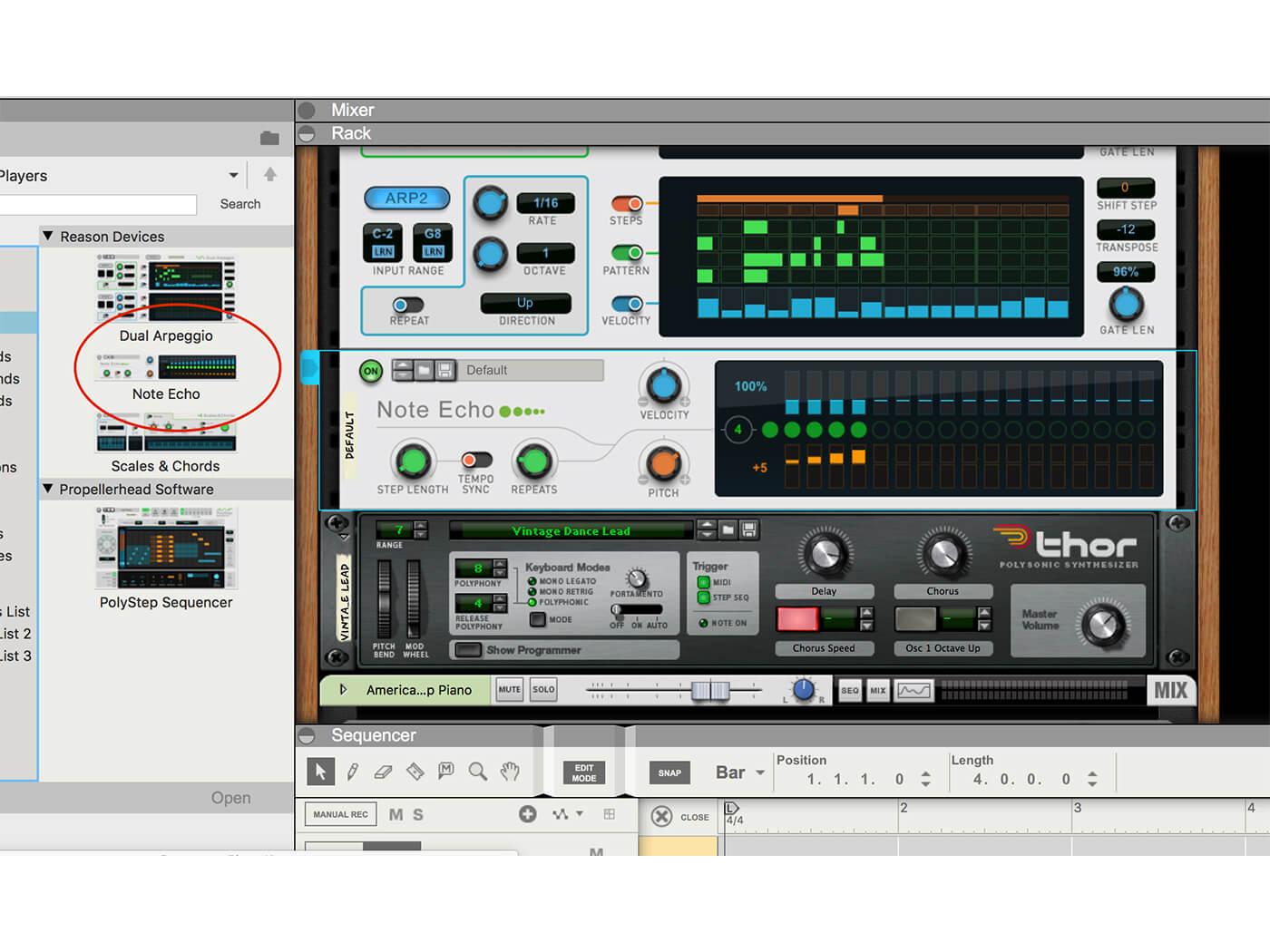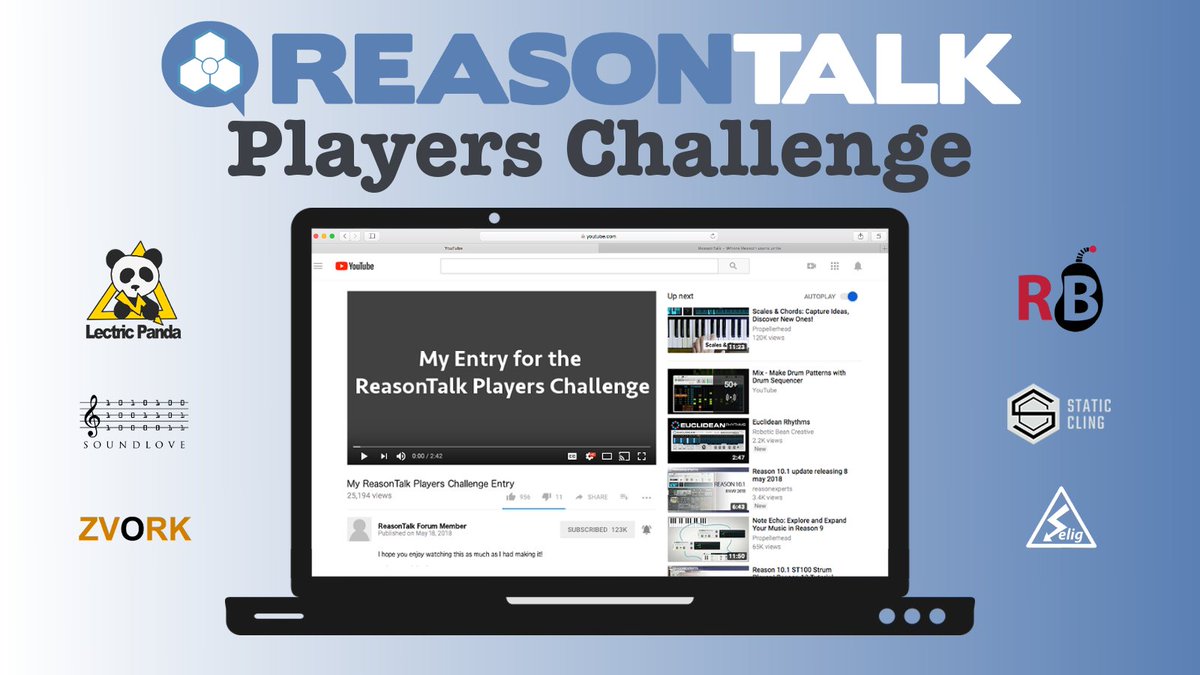

In Direct Record mode your keyboard is patched directly into the Player, and the Player’s output goes to the MIDI track and from there to the instrument. In the default situation, MIDI notes from your keyboard go first to the MIDI track, and are then passed on to the Player chain, and subsequently the instrument.

The best way to think about these options is in terms of signal flow. Direct Record would make sure you heard the same thing wherever you started playback. This is because Reason doesn’t ‘chase’ MIDI events so you won’t hear your Player performance unless you play through the start of the notes you recorded. Also, while the joy of Players is that you can get amazing results from just holding down a note or chord, this can be problematic in the Sequencer. You’re also able to see and edit the performance if it’s fully captured in a track. For example, you might want to capture the Player-enhanced performance into a MIDI clip and be able to re-use it without the Players, maybe in another track. This mode is useful in several situations. Alternatively the Players offer a Direct Record mode, in which their output is actually recorded into the Sequencer track.

The default situation is that Reason will record the MIDI notes you’re playing, then have the Player continue to process the notes as they are played back from the track. However, when it comes to recording you need to pause for a moment and think about the workflow. It’s easy to get going with the Players as you just drop them in and start playing. You’d typically have one or more Players chained in front of an instrument, although in the case of a Combinator you could have multiple instruments each with their own Players, each of which processes the MIDI input separately. Record PlayerĪs we saw last time Players are not cabled into the rack in the same way as other devices, they are snapped onto an existing instrument and ‘intercept’ MIDI coming from the track to the instrument. This month we’ll look at some general workflow considerations for using Players, and get stuck into the Dual Arpeggiator. The new Player modules in Reason work magic with MIDI, from simply keeping you in key to generating chords, arpeggiation, rhythmic sequences or echoes from simple inputs. We get to grips with Reason 9’s new Player modules. Screen 1: This pattern example emulates a traditional monophonic arpeggiator.


 0 kommentar(er)
0 kommentar(er)
